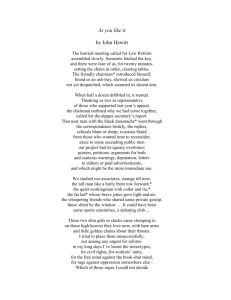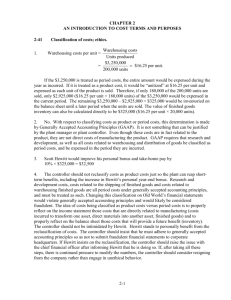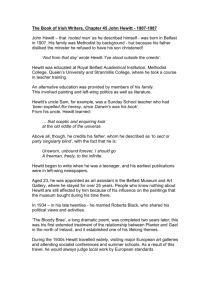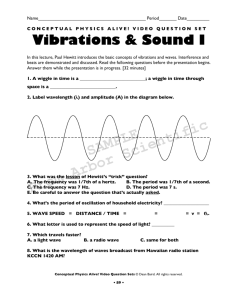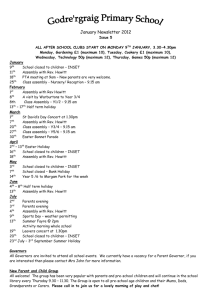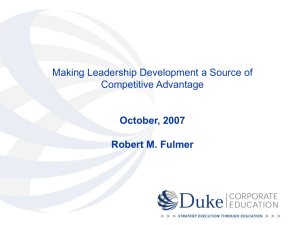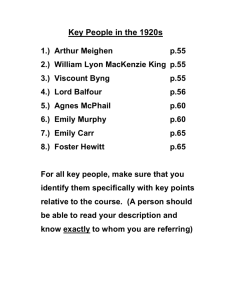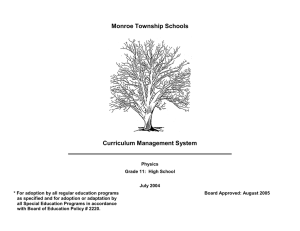NSDL IR panel
advertisement
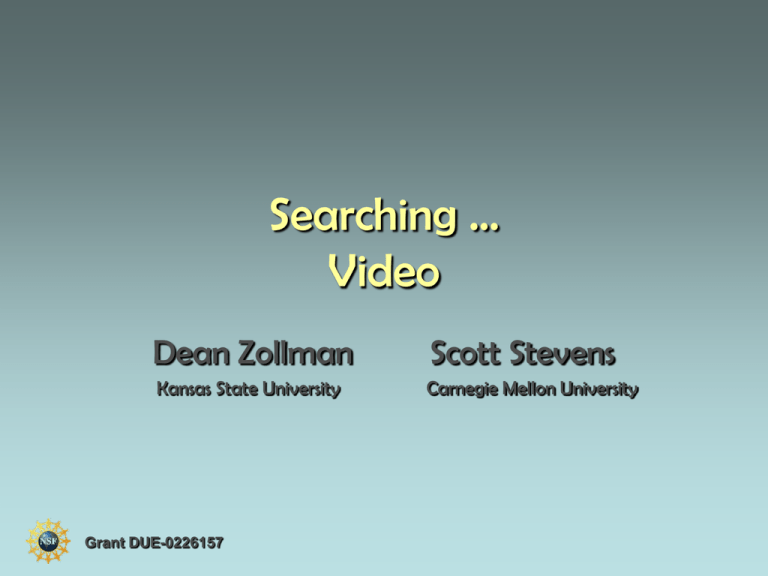
Searching … Video Dean Zollman Scott Stevens Kansas State University Carnegie Mellon University Grant DUE-0226157 Video Database • “Traditional” – Short video scenes – Taken from instructional videos – Traditional search engine interface – Content for physics teaching • Synthetic Interviews – Conversational interactions with experts – Natural language interface Issues • Extracting the metadata • Presenting the video – Users must determine if it is useful – Watching the video may be too time consuming Traditional: informedia digital library Traditional Search Interface Results by relevance Relevance with Text Rich Storyboard Detailed Storyboard Video with Transcript & Markers Synthetic Interview Conversational Mode Ask an Expert Physics Teacher Paul Hewitt (Short bio) Should I teach Aristotle's mechanics Ask Ask an Expert Physics Teacher Paul Hewitt (Short bio) Should I teach Aristotle's mechanics Ask Related to this question • National Science Education Standards • Research on Learning Physics Issues for Secondary Teachers • Not enough qualified teachers – True in many disciplines; critical in physics • No Child Left Behind Assessment – Lower thinking order, discreet questions – Assessments built by the lowest bidder • Teaching is controlled in time & space – Len Simutis • Too much (non teaching) to do Teachers’ needs • Immediate relevance • Need it tomorrow • Completeness – Little time for searching out additional information – Background in physics is limited • Proof that they are teaching the “right thing” – Standards http://www.physicspathways.org Paul G. Hewitt Paul G. Hewitt, former boxer, uranium prospector, sign painter, and cartoonist began college at the age of 28 and fell in love with physics. His name is synonymous with Conceptual Physics to physics educators everywhere. Before the advent of Professor Hewitt's textbook of the same name, physics was traditionally taught primarily as applied mathematics - geared to students with high math and science aptitudes. As such, any serious study of physics was out of the educational mainstream for most students. Hewitt's conceptual approach changed all this. By translating the central concepts of physics from mathematical language to common English and by extensive use of analogies as a teaching tool, Hewitt brought physics into the educational mainstream. His textbook, the leading physics textbook for nonscientists since 1971, has changed the way physics is taught to both non-science and science majors as well. Hewitt's teaching career began in 1964 at City College of San Francisco, his home base. He has taught an evening course for the general public at the Exploratorium in San Francisco. He has taken leaves to teach physics at the University of California, both at the Berkeley and Santa Cruz campuses, and more recently at the University of Hawaii at both the Hilo and Manoa campuses. In 1987 he wrote a high-school version of Conceptual Physics. The high school text is now in its third edition. The college text is now in its ninth edition. Translations of both texts find Conceptual Physics popular worldwide. Hewitt's other textbooks include the 2nd Edition of Conceptual Physical Science, co-authored with his daughter Leslie, a geologist, and his nephew John Suchocki, a chemistry instructor formerly at Leeward Community College in Oahu, HI. Very recently, Paul, Leslie, and John have written a version of the physical science book aimed at 9th graders in high school. It is Conceptual Physical Science-Explorations. Hewitt's only trade book (non textbook) is Touch This-Conceptual Physics for Everyone. Its former title was simply Conceptual Physics for Everyone. In recognition of Hewitt's achievements, the American Association of Physics Teachers honored him in 1982 with their Millikan Award - the once-per-year prestigious prize for outstanding contributions to physics teaching. At present, Hewitt is a column editor for The Physics Teacher, the monthly magazine of the American Association of Physics Teachers. Hewitt now resides in both St. Petersburg, Florida and Hilo, Hawaii. – http://www.conceptualphysics.com/pghewitt.shtml

